巻号一覧

30 巻, 10 号
選択された号の論文の2件中1~2を表示しています
- |<
- <
- 1
- >
- >|
-
M. HYODO1985 年 30 巻 10 号 p. 203-222
発行日: 1985/10/15
公開日: 2011/10/18
ジャーナル フリーIn 1965, a pain clinic was established at the Osaka Medical College, to combine oriental medicine such as acupuncture, moxibustion and herb medicine with techniques of modern medicine (i. e. nerve block, drug administration, surgical procedure, etc. )
Owing to a policy of national isolation, oriental medicine had been the orth odox medicine until the last century. It gave reasonable results, particularly in painful diseases. With the introduction of modern western medicine, the old oriental therapies were overshadowed.
Pain is an extraordinarily complex phenomenon which is difficult to treat by simple measures. Noting the simplicity and absence of serious complications offered by the traditional oriental medicine, we began to reevaluate it in our pain clinic.
Initially, we had not expected much from oriental medicine. W e had the slight hope that it would be enough if some percentage of the patients defined as incurable by western medicine responded to acupuncture treatment. But an analysis of the initial series of cases treated by acupuncture showed us that acupuncture was more effective and useful than had been estimated.
The succeeding stu d y was to make clear the types of pain for which acupuncture is indicated. For this purpose, intensive and extensive investigations have so far been undertaken. Nearly 20 years' experience with more than 20, 000 new patients treated have given us the answers needed regarding the indication for painful diseases.
Two examples will serve to illustrate how acupuncture effective l y applies in the pain clinic. First, an elderly person referred to the pain clinic from the orthopaedic department, who suffered from low back pain due to osteoarthrits of the spine. The customary treatment is either by injecton of a local anesthetic drug into the trigger points or epidural block with local anesthetic and steroid. These often afford excellent relief of pain, particularly in sciatica-like neuralgia caused by nerve root inflammation.
Acupuncture is indicated for the remaining residual pain after two or three epidural nerve block treatments, following which the unbearable radiating pain was eliminated. Should the patient not wish an injection or should nerve block be cont raindicated, acupuncture is applied as the first treatment. Even if the block treatment is initially indicated, there is no reason why acupuncture cannot be given concurrently. An additional effect can be expected because the mechanism of action is different between the two types of treatment.
Furthermore, oriental medicine always aims at regulating the whole body function. By means of the simultaneous stimulation to both the local points and the meridian points suited to the symptoms, the patient's general body function is improved by easing fatigue and acting beneficially on appetite, sleep, bowel habits, etc.
The second example is a patient with atypical facial pain. Although stellate ganglion block may well be selected as the method of treatment, it must be remembered that this facial pain is only a local manifestation of a general imbalance of the autonomic nervous system. Therefore, oriental medicine which is useful in the functional disturbances is strongly recommended in preference to or in addition to ganglion block. Additionally, the shoulder or back stiffness that always accompanies this disease is effectively treated by acupuncture. Other medication or psychotherapy may well be given together if thought necessary.抄録全体を表示PDF形式でダウンロード (5579K) -
1985 年 30 巻 10 号 p. 238
発行日: 1985年
公開日: 2011/10/18
ジャーナル フリーPDF形式でダウンロード (236K)
- |<
- <
- 1
- >
- >|